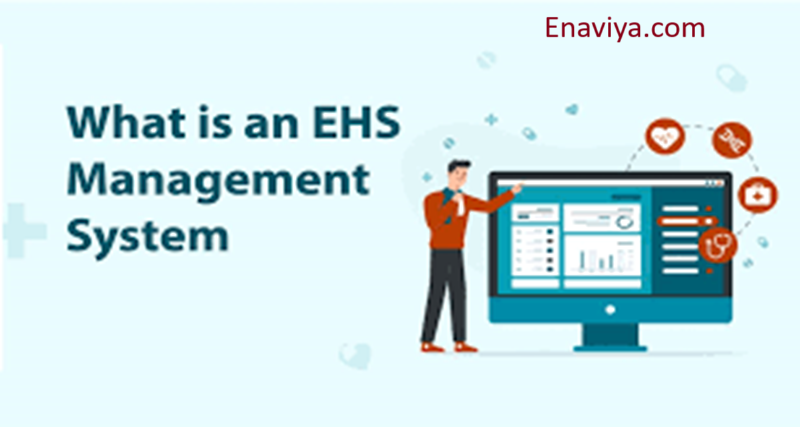Introduction
In an era where workplace safety, environmental stewardship, and regulatory compliance are paramount, EHS Management Software (Environment, Health, and Safety Software) has emerged as a critical tool for organizations. This technology streamlines the management of complex EHS processes, mitigates risks, and ensures adherence to global standards. Let’s explore what EHS Software entails, its core features, industries that benefit most, and the key components of an effective EHS management system.
What is EHS Software?
EHS management software is a digital solution designed to help organizations monitor, manage, and report on environmental, health, and safety activities. It centralizes data, automates compliance tasks, and provides actionable insights to reduce workplace incidents, environmental impact, and regulatory violations. By integrating real-time analytics and workflows, it empowers businesses to foster a culture of safety and sustainability.
Key Features of EHS Software
- Incident Management
- Logs accidents, near-misses, and hazards.
- Facilitates root cause analysis and corrective actions.
- Tracks incident resolution timelines.
- Compliance Tracking
- Monitors evolving regulations (e.g., OSHA, REACH, ISO 14001).
- Generates audit-ready reports and automates compliance deadlines.
- Risk Assessment & Mitigation
- Identifies potential hazards through qualitative/quantitative assessments.
- Prioritizes risks and recommends control measures.
- Environmental Management
- Tracks carbon emissions, waste disposal, and resource consumption.
- Supports sustainability reporting (e.g., GRI, CDP).
- Training & Competency Management
- Assigns safety courses and tracks employee certifications.
- Offers mobile learning for remote workers.
- Audit & Inspection Management
- Schedules audits, records findings, and manages follow-up actions.
- Customizable checklists for site-specific evaluations.
- Analytics & Dashboards
- Visualizes KPIs (e.g., incident rates, compliance status).
- Predictive analytics to forecast risks.
Industries That Benefit from EHS Software
- Manufacturing: Manages machine safety, chemical exposure, and OSHA compliance.
- Construction: Tracks site hazards, contractor safety, and permits.
- Oil & Gas: Monitors spill prevention, process safety, and remote site compliance.
- Healthcare: Ensures biohazard management, staff safety, and EPA regulations.
- Pharmaceuticals: Complies with FDA guidelines and lab safety protocols.
- Utilities: Addresses electrical safety, environmental permits, and emergency response.
Key Components of an EHS Management System
- Leadership & Policy Framework
- Establishes EHS goals and leadership accountability.
- Software feature: Policy dissemination and acknowledgment tracking.
- Risk Management
- Systematic identification and mitigation of hazards.
- Software feature: Dynamic risk matrices and scenario modeling.
- Regulatory Compliance
- Aligns operations with local and international laws.
- Software feature: Automated regulatory updates and gap analysis.
- Incident Investigation
- Structured processes for analyzing incidents.
- Software feature: Digital root cause analysis (RCA) tools.
- Training & Awareness
- Ensures workforce competency in EHS practices.
- Software feature: Mobile-friendly training modules.
- Performance Monitoring
- Tracks progress toward EHS objectives.
- Software feature: Real-time dashboards and benchmarking.
- Continuous Improvement
- Iterative enhancements based on data insights.
- Software feature: Corrective action tracking and trend analysis.
Benefits of Implementing EHS Software
- Reduced Incidents: Proactive risk management lowers workplace injuries.
- Cost Savings: Avoids fines and operational downtime.
- Enhanced Sustainability: Supports ESG (Environmental, Social, Governance) goals.
- Streamlined Reporting: Simplifies submissions to regulators and stakeholders.
Choosing the Right EHS Software
- Scalability: Adapts to organizational growth.
- Integration: Compatible with ERP, HRMS, and IoT devices.
- User Experience: Intuitive interface for high adoption rates.
- Vendor Support: Offers training and updates.
Future Trends in EHS Technology
- AI & Predictive Analytics: Anticipates risks using historical data.
- IoT Integration: Wearables and sensors for real-time hazard detection.
- Mobile-First Solutions: Empowers field workers with on-the-go access.
Conclusion
EHS Software is no longer optional for industries navigating complex regulatory landscapes and sustainability demands. By leveraging its features—from incident management to AI-driven analytics—organizations can safeguard their workforce, protect the environment, and build operational resilience. Investing in a robust EHS management system isn’t just compliance; it’s a strategic move toward long-term success.
Ready to transform your EHS processes?
Are you ready to transform your EHS processes for your enterprise? Explore top EHS Software solutions tailored to your industry’s needs and start your journey toward a safer, greener future today.
Enaviya’s EHS Management Software
With Enaviya’s streamlined Environmental management software, you can effectively manage environmental performance metrics by proactively planning and operating tasks. With a team backed with years of experience, we have designed and developed a perfect environmental management solution by joining hands with the best ecological experts. Get a free consultation now!

